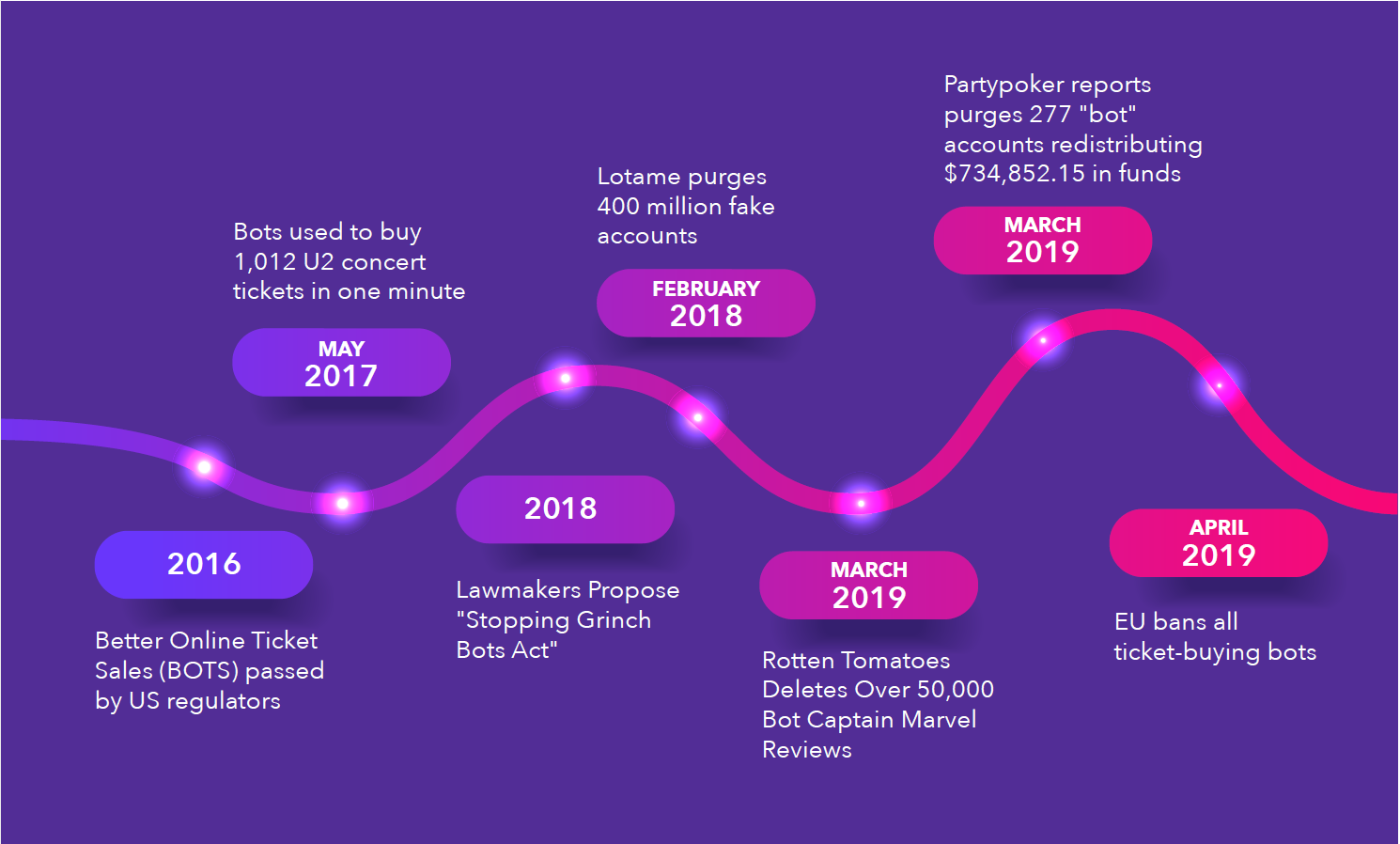Click Fraud and Bot Mitigation | Lessons from Groupon
Marina Vafaei
|Cyber Risks & Threats | September 01, 2022

Automation of click fraud prevention and bot mitigation is crucial
As the former team leader for risk management at Groupon, I have managed risk and prevented fraud on more than $ 1.7 billion in sales. We constantly had to be aware of the threat of bots attacking the site in a massive network that served 26.5 million active customers in the US alone.
Bots could also infiltrate our marketing spend with fake clicks and junk leads. Groupon itself invested nearly $400 million annually, including paid online advertising, such as search engine keywords, as well as offline advertising, such as TV commercials. In both our sales and our marketing, we were laser-focused on preventing fraud that is increasingly affecting enterprises.
Marketers in the digital age will attract attention from malicious users, but we can combat their activity with automated solutions. The speed at which you act against invalid clicks for your live marketing campaigns heavily weighs on this success.
Online intent is up (but so is the threat from bots)
According to Adobe’s Digital Economy Index (DEI), online purchasing power has increased by nearly 28% over the past six years. This resulted in web sales across the global economy amounting to a staggering $3.4 trillion in 2019.
However, fraud and bot attacks are a constant threat for all companies, including everything from online retailers, to ticketing or poker sites.
Big eCommerce platforms are particularly affected. According to the University of Baltimore, eCommerce alone will lose $3.8 billion in invalid clicks on marketing campaigns in 2020. This is because fraud groups are heavily invested in their schemes and use sophisticated systems to change their approach in record time on a mass scale.
Therefore, some tips to consider in your click fraud and bot mitigation strategy are:
1. Look at your Historical Data
Have you noticed any patterns of unusual traffic? During your peak season (or even more peculiar) during your off-season? It is common for fraud rings to have a scheduled log or business book of large enterprises they target repeatedly year after year.
They follow eCommerce trends, so for instance we found that they know consumers are looking for their new floral perfume during the summer, or that audio equipment and mics are on the rise as podcasting has become a top hobby.
If you see historical evidence that suggests you were targeted by a bot attack, it is likely that same group will attack again.
2. Your Team has the talent, but do they have the time?
While it is important to review traffic logs regularly, it may not be enough to spot suspicious behavior. By the time you see a surprising pattern, abnormality, or unusual activity, only then reacting to it, the damage may have already been done.
Here are some common questions that come up when reviewing reporting:
- Do these conversions make sense?
- If there is suspicious behavior, how big is the impact?
- What can we do next?
3. Decide on internal detection or advanced software
For marketers, Google trends shows that the search query, “Click fraud protection” has increased by 350% in 12 months as companies recognize the need for an immediate solution to this growing problem.
When it comes to building a fraud prevention tool internally for an enterprise, the trends are changing too fast to keep up with. Most importantly, it is not the focus of your business. Handling click fraud internally could be costing you time and wasted advertising spend, and infiltrating your CRM, infecting your entire business.
CHEQ’s bot mitigation technology features real-time blocking of invalid users. By using machine learning pattern recognition, invalid activity is addressed efficiently. This is critically important because automation ensures it is taken care of. In contrast, some companies can spot activity while mornitoring, but could be damaged due to excessive time spent making decisions and getting approval. Automation means your team can continue to focus on what they do best, and you can operate with peace of mind knowing your efforts are not wasted on fraud.
4. You are not alone
Every company experiences invalid clicks from users. Luckily, in the fraud prevention space there is a sense of comradery among big e-retailers willing to share best practices in this digital age. This includes sharing the best new technology options to fight fraud together.
Practically speaking, large enterprises agree that to protect marketing spend, companies need to combat sophisticated attacks with sophisticated tools, including CHEQ’s powerful system that catches bad traffic without blocking genuine customers. Your team can be seamlessly set up in five minutes and have peace of mind moving forward.
Conclusion
The trouble with bot attacks is they test your system, sometimes for extended periods of time before the real damage begins. Wise IT professionals live by the saying, “It’s not if they’ll attack – but when.”
Are you ready? Book a demo to see how to leverage your marketing campaigns to only your ideal customers today.
Marina is CEO and Co-Founder of BlueBist, specializing in risk management. Previously she was team lead, risk management at Groupon responsible for managing risk and protecting revenue, and eliminating fraud across $1.7 billion in sales for the global eCommerce platform.















